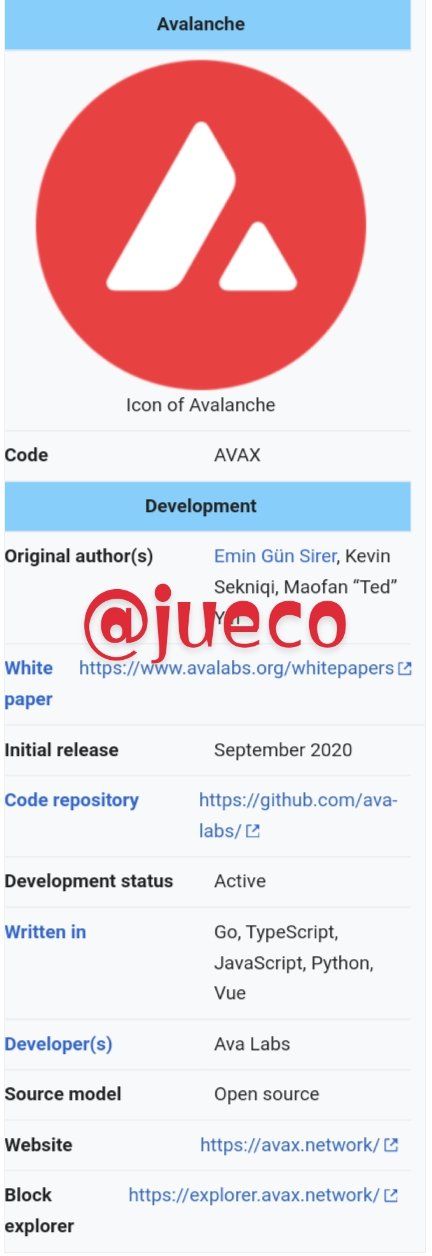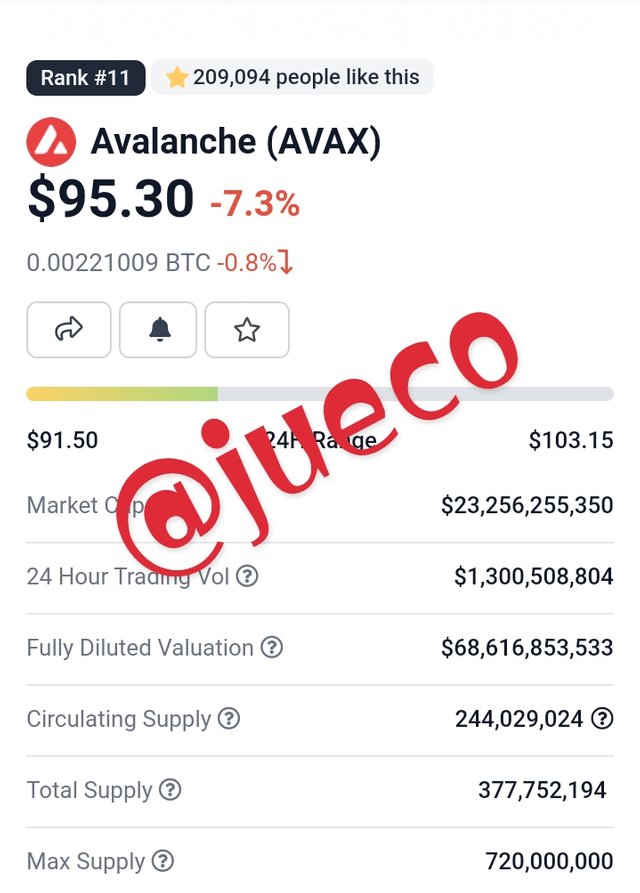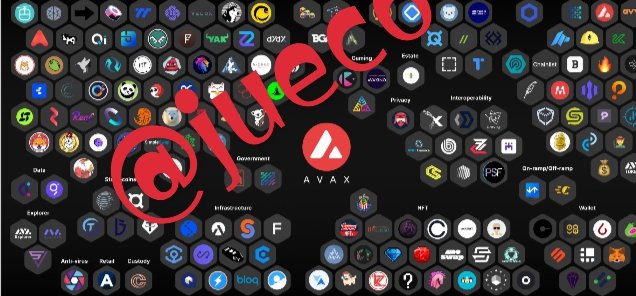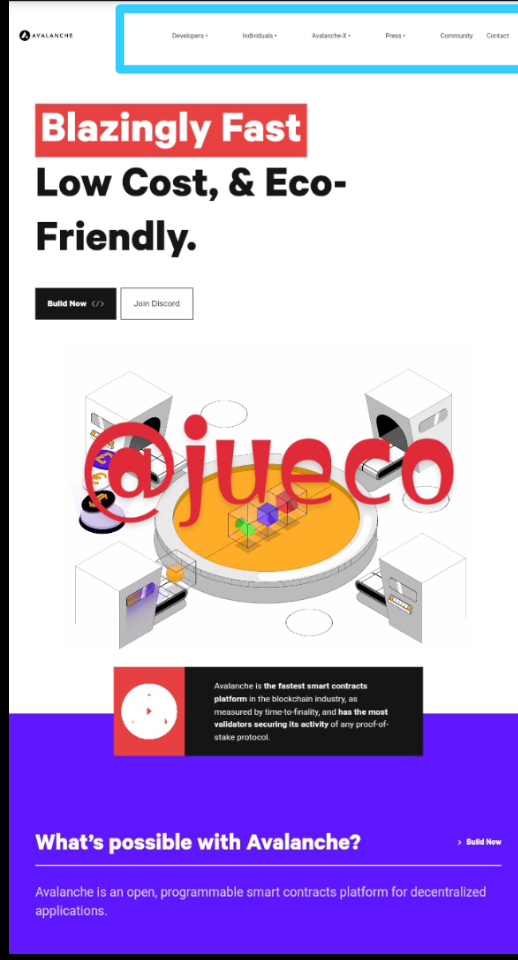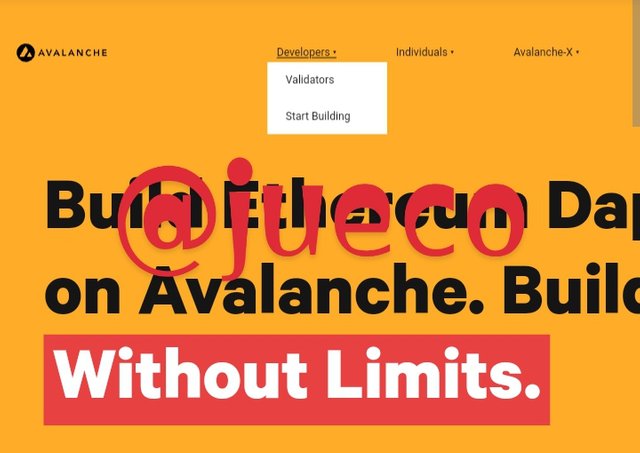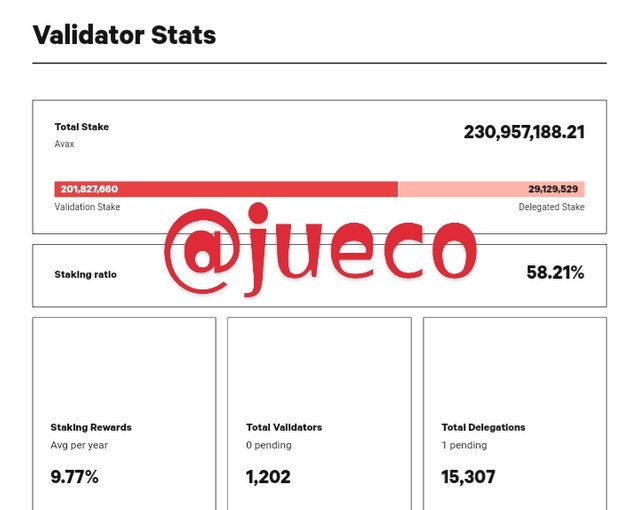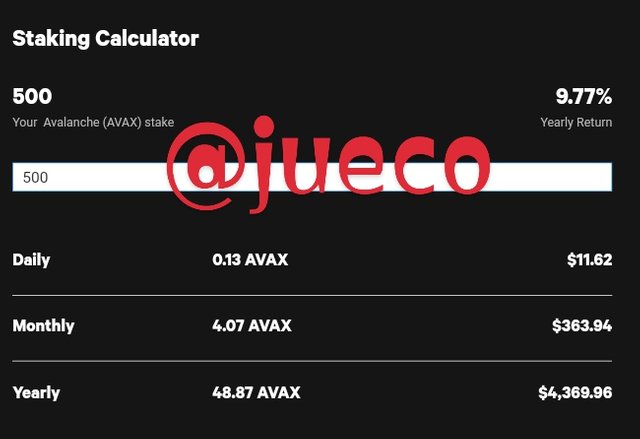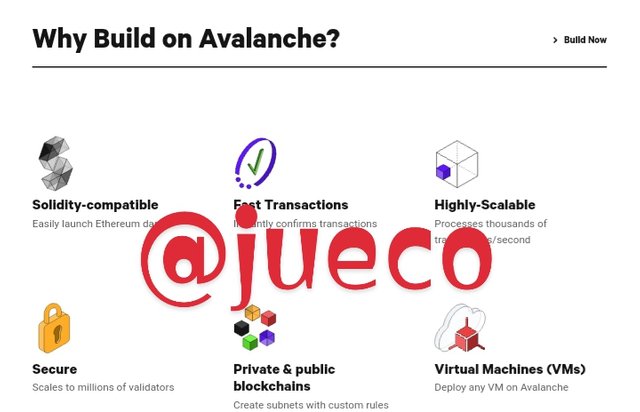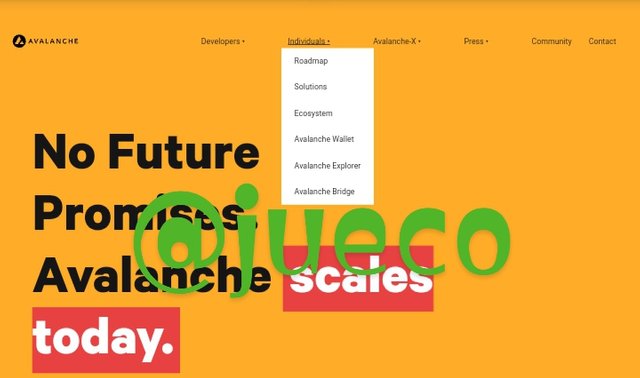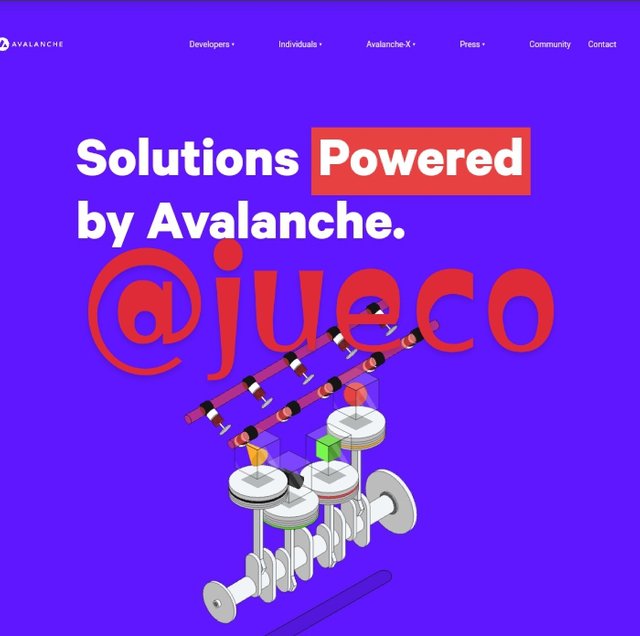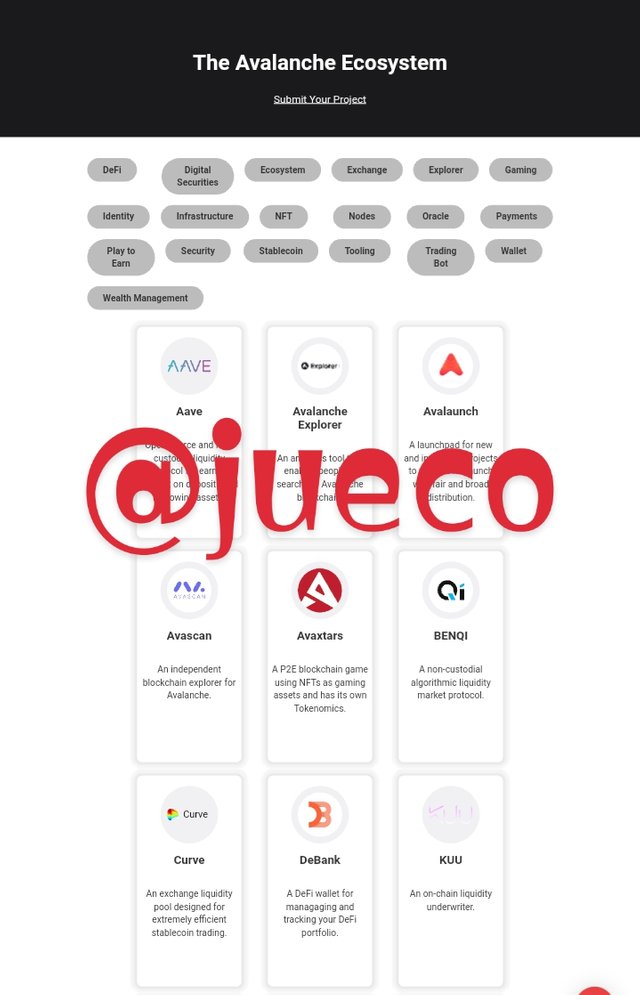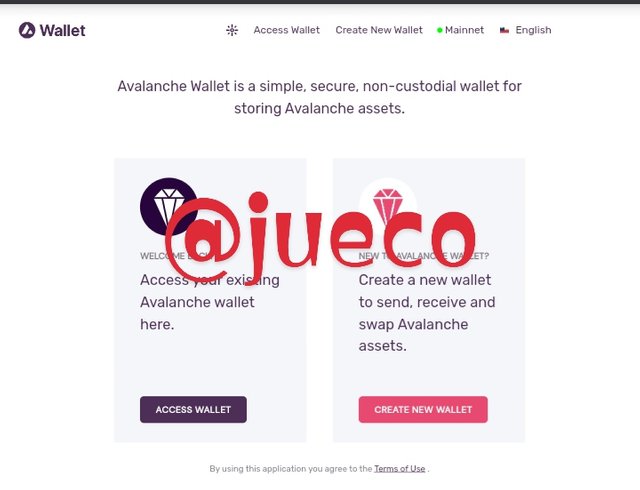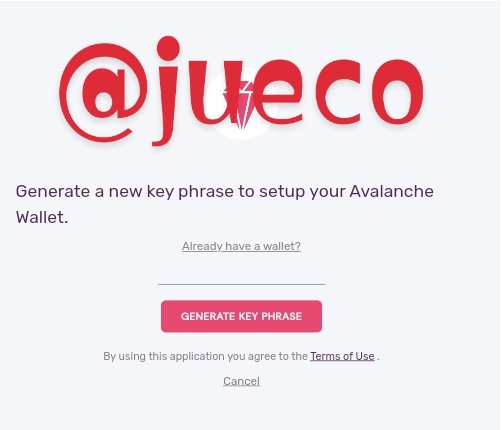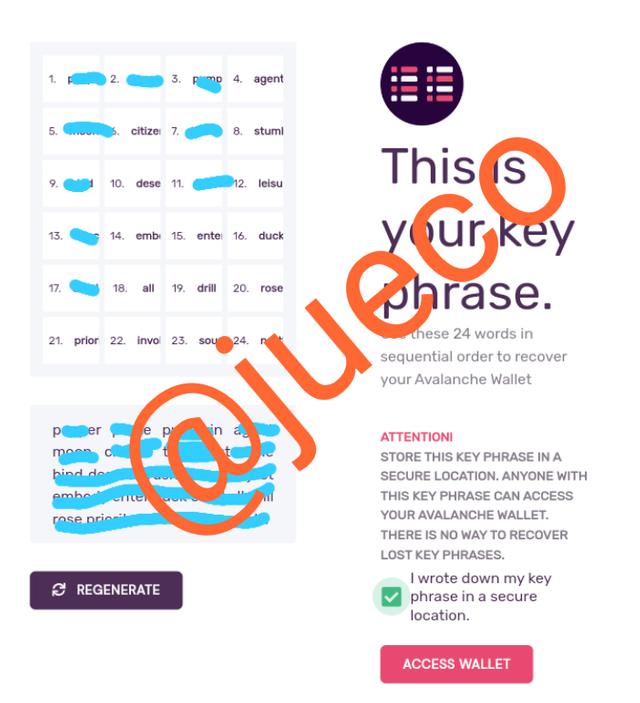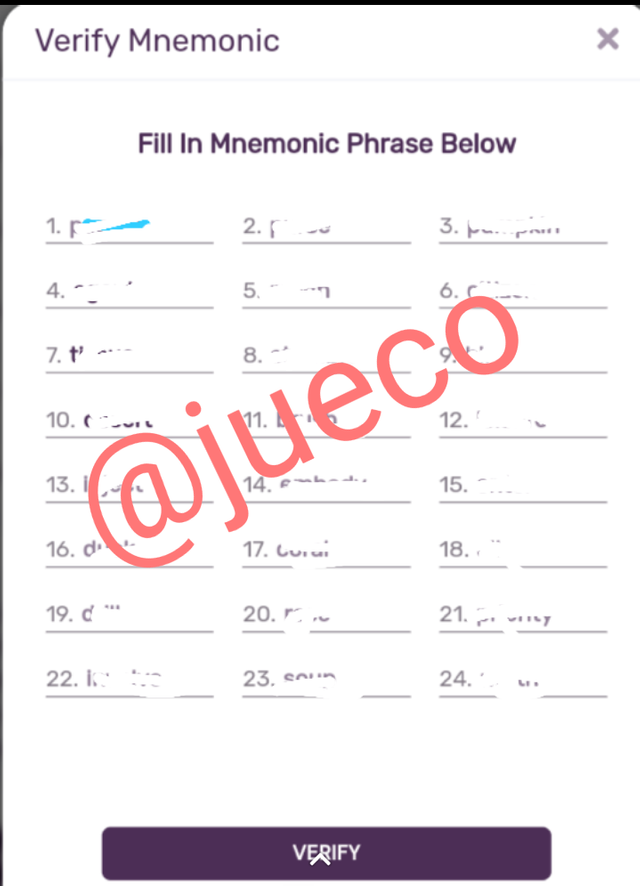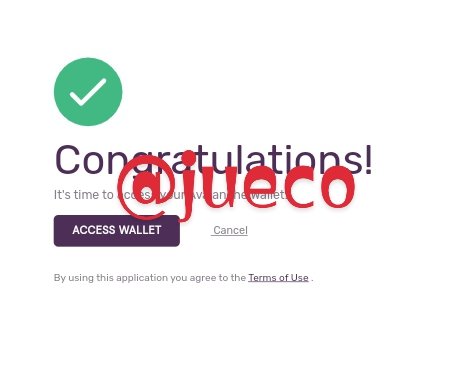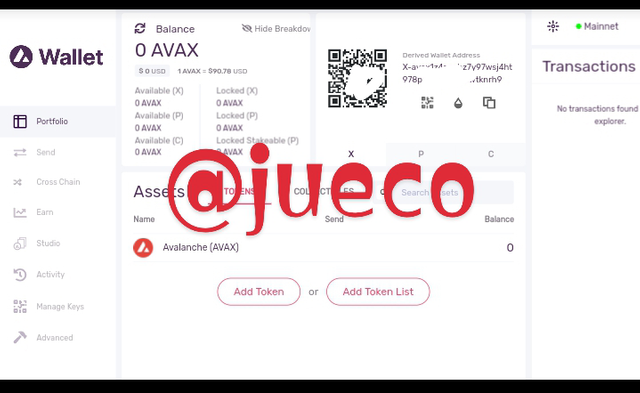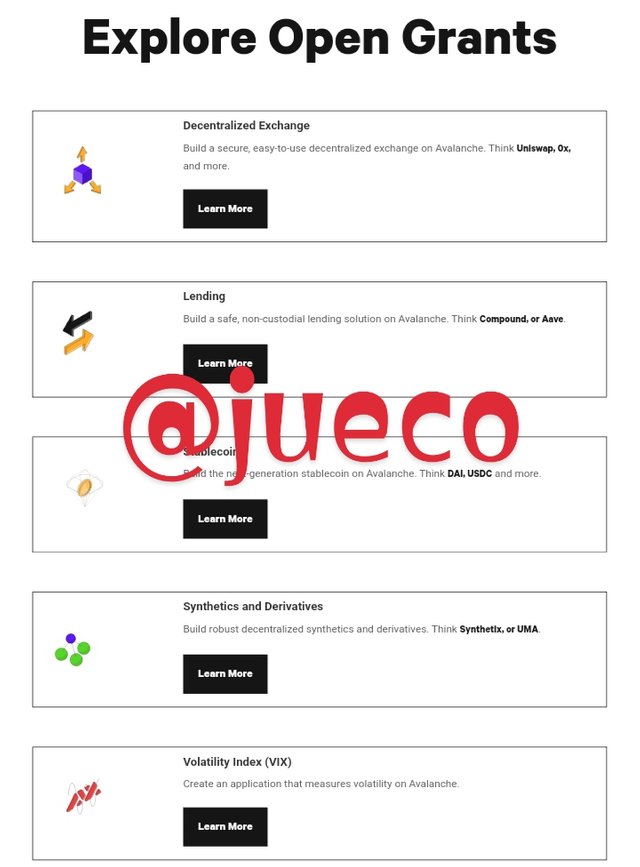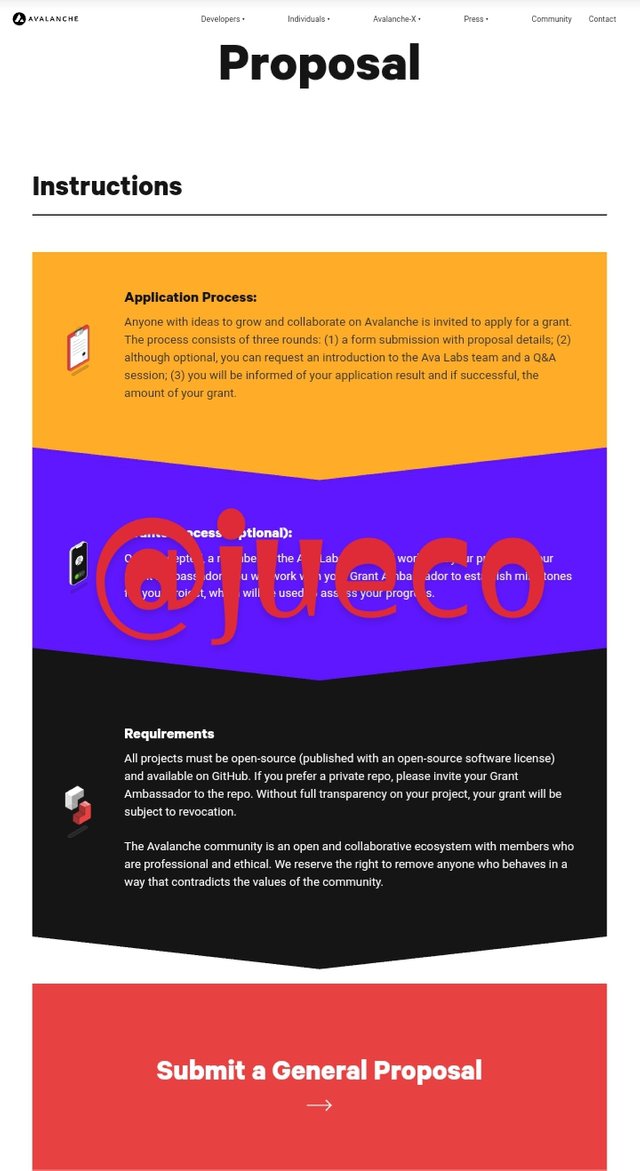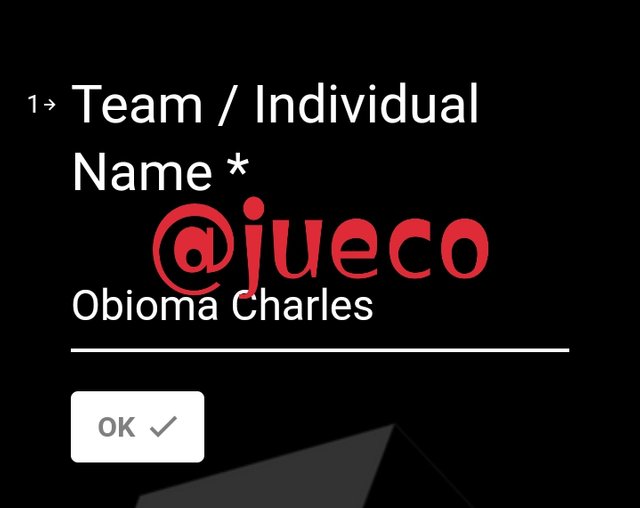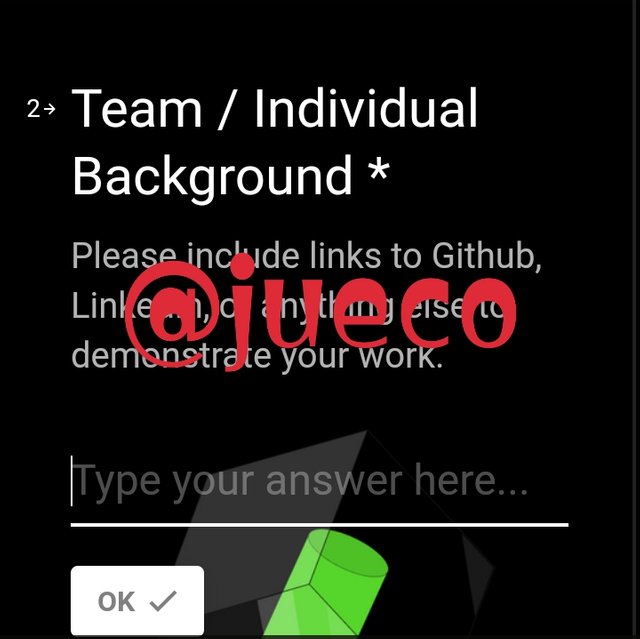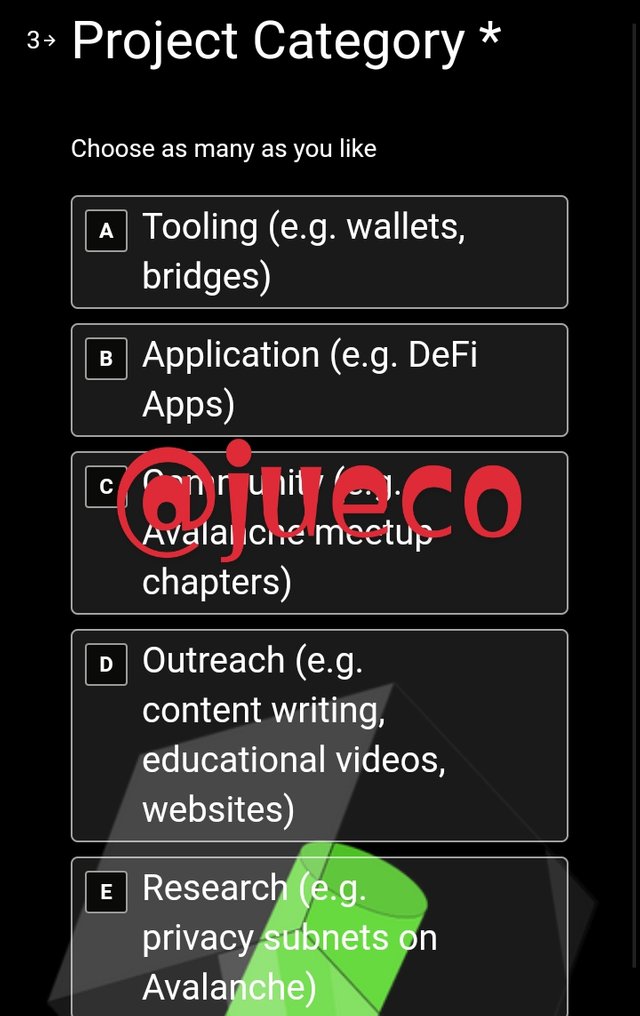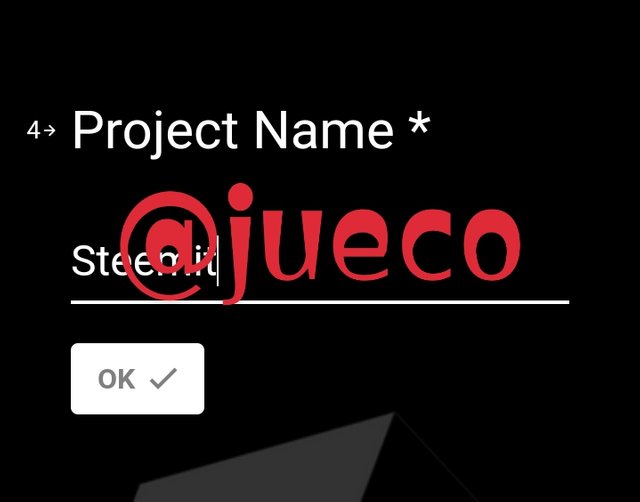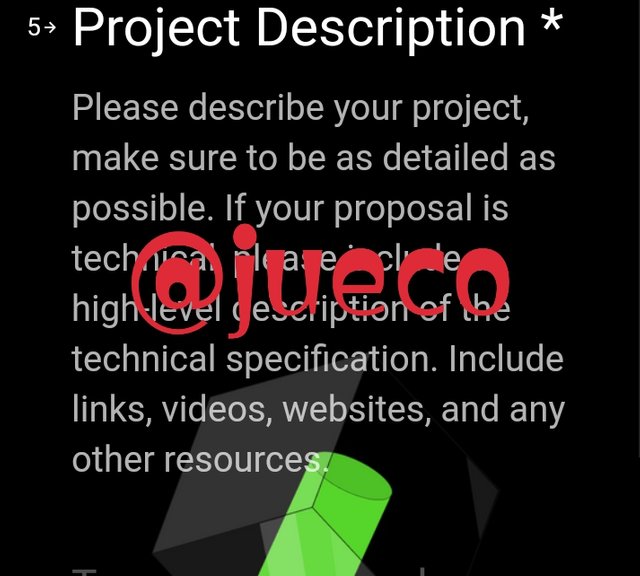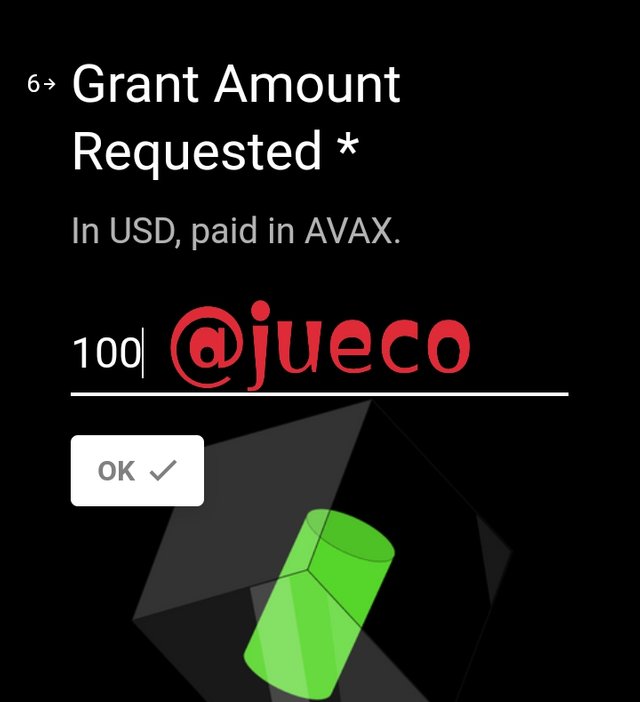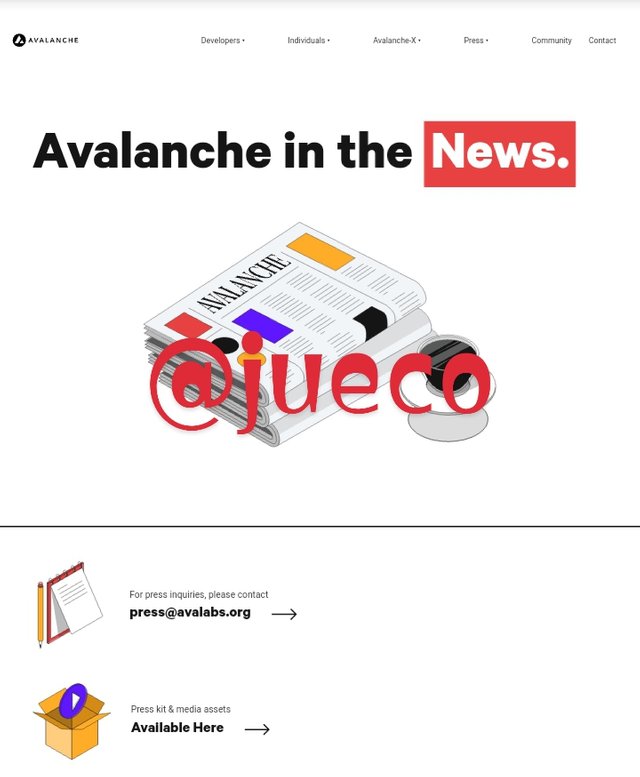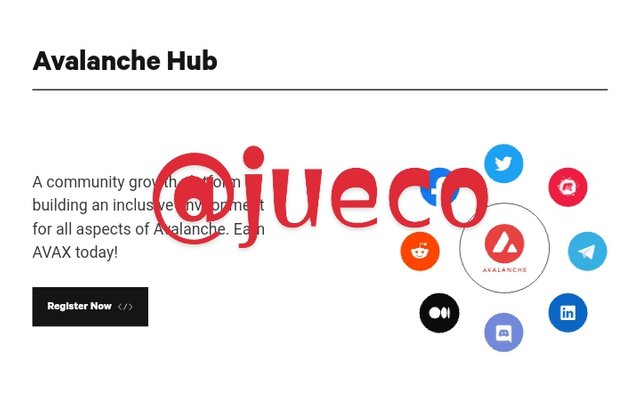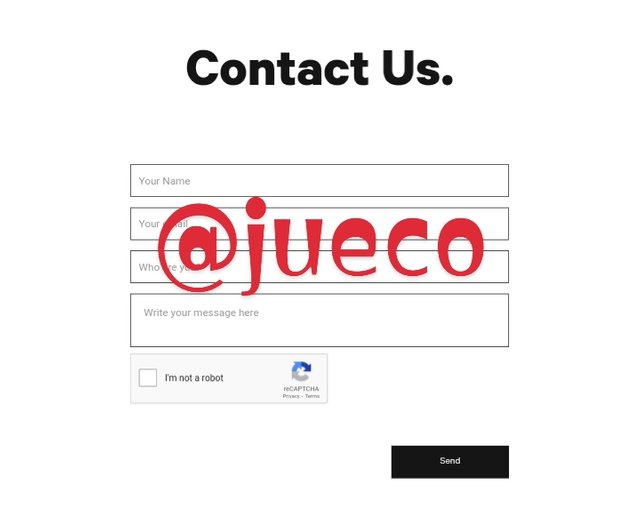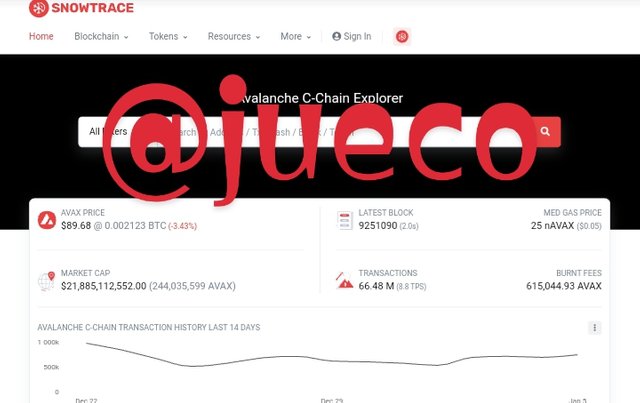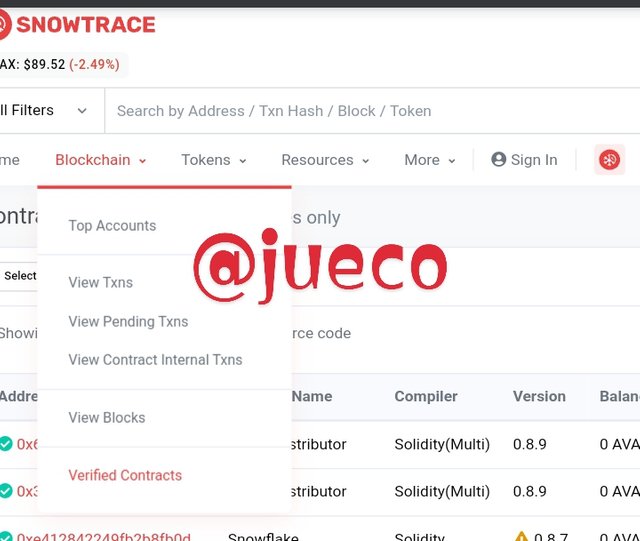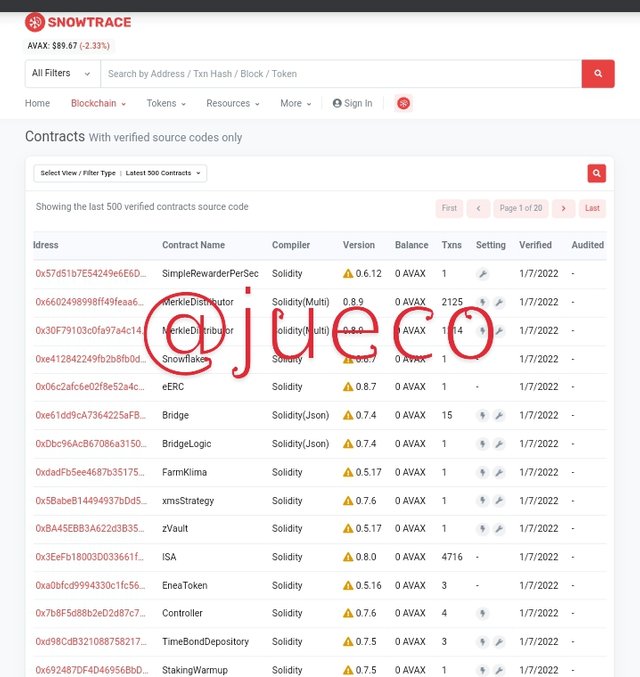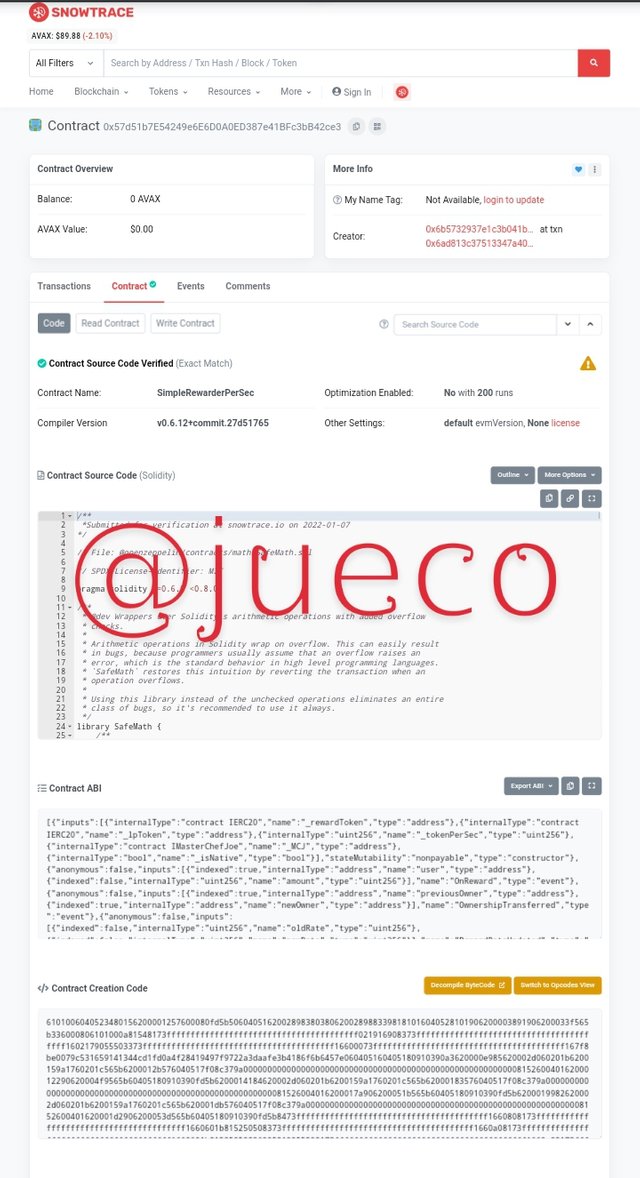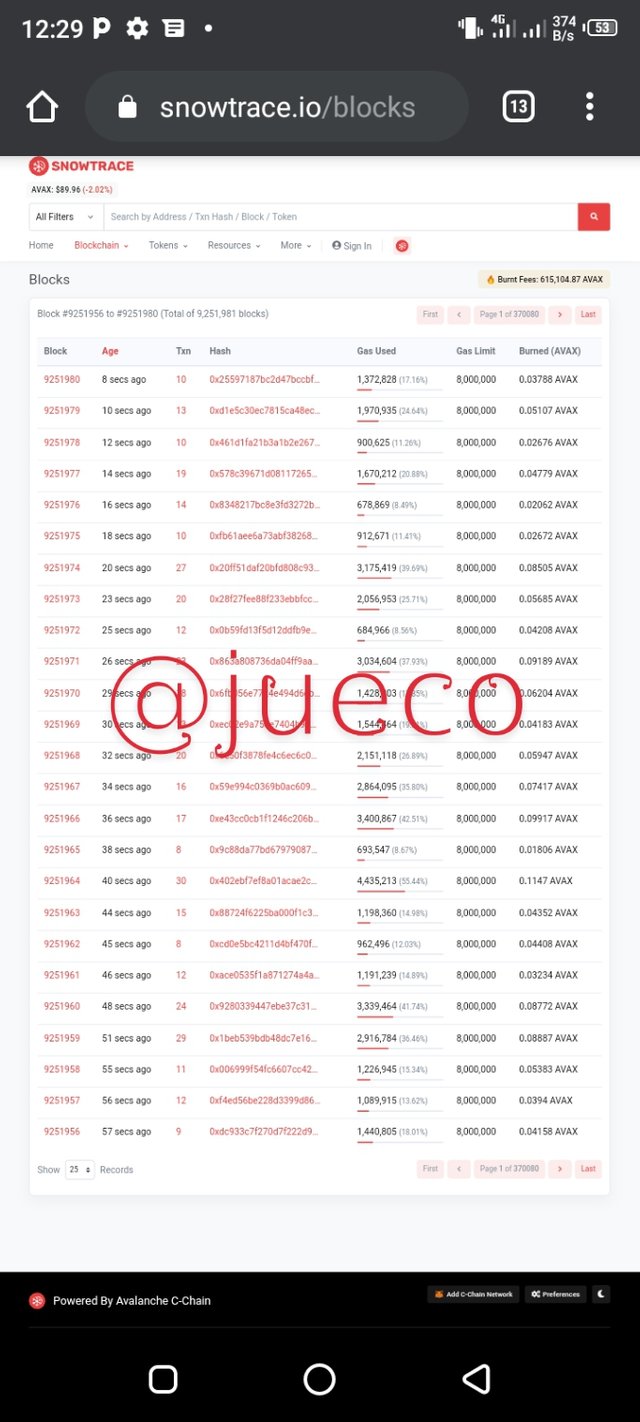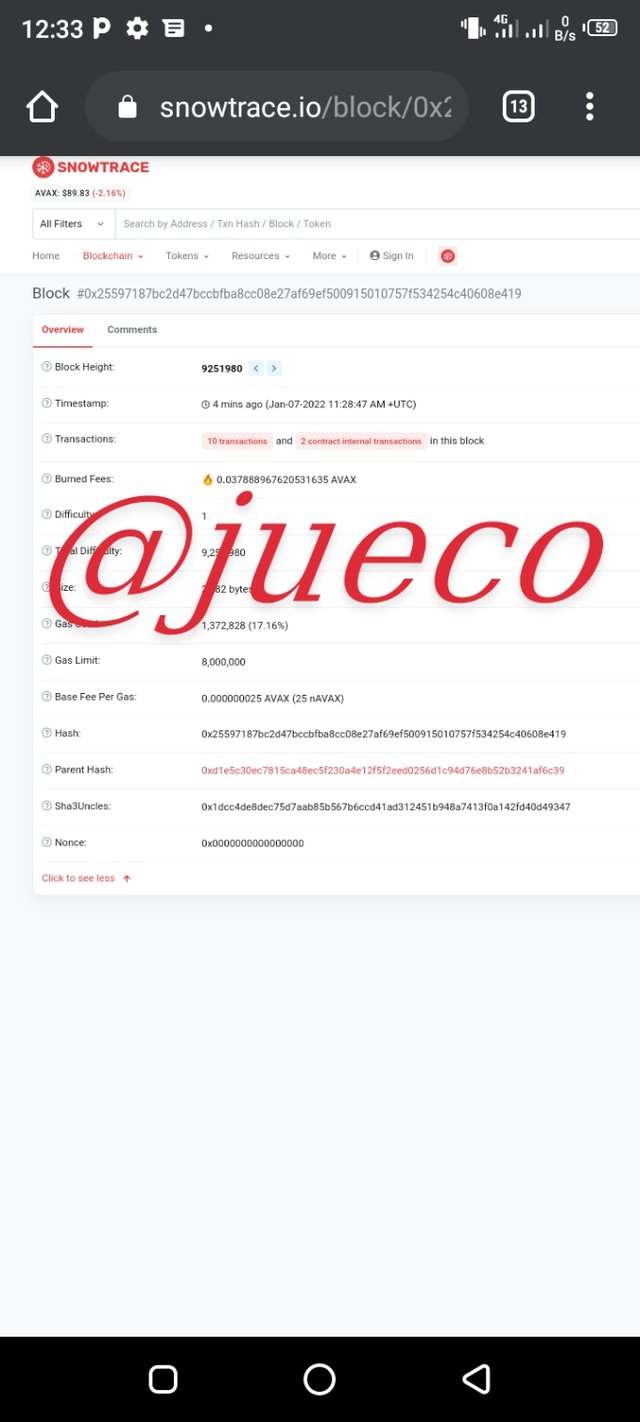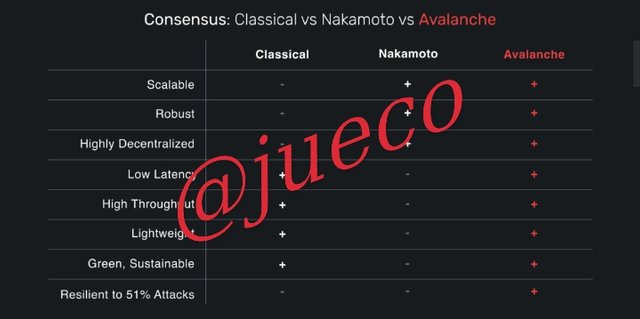Avalanche Blockchain - Crypto Academy/ S5W8- Homework post for Pelon53
Hello friends,
With joy of heart, I welcome you to my last academy assignment post for Season5.
This week, we shall be learning from @pelon53, and we shall be discussing on "The Avalanche Blockchain".
Please follow along as we begin our exploration
EXPLAIN IN DETAILS X-CHAIN, X-CHAIN AND P-CHAIN
EXPLAIN IN DETAILS X-CHAIN, X-CHAIN AND P-CHAIN
As a learned crypto student, it will be absurd to discuss to explain in details the x-chain, c-chain, and p-chain without giving a brief explanation of it's blockchain; The Avalanche Blockchain.
The Avalanche ( Avax) can be referred to a smart contract blockchain platform whose aim is to decrease transaction cost, increase it's speed and makes its platform environmental friendly.
It can also be referred to a blockchain platform that is made secured by validators through the use of a proof of stake consensus mechanism.
From beginning, developers have always faced the issue of blockchain trilemma, that is , the impossibility to implement three core features [ Scalability, Security and Decentralization] into the blockchain technology, they always have to neglect one and implement the other two.
But the Avalanche aims at implementing these core features into the blockchain, without neglecting any.
The Avalanche was founded by Dr. Emin Gunstier in the year 2019 and was launched by the Ava lab team in the year 2020.
Avalanche has proven to be the most scalable blockchain, that is, it has proven to attain to attain the fastest time to finality of transactions carried out on the blockchain network.
As it is known, the time taken for transactions to attain finality is a very important feature of the blockchain. As Ethereum strives to attain finality in one minute, Avalanche attains it's finality in a second.
The token used by the Avalanche platform is it's native token known as AVAX which was issued on September 2020, after it's ICO which ended on the 15th of July 2020.
The below screenshot shows the analysis of the AVAX token as at the time this post was made.
The Avalanche platform has proven to be a rival to that of Ethereum platform, as it is built to be faster and less costly than Ethereum.
Avalanche is capable of processing more than 4500 transaction per second, while Ethereum barely process 13 transaction per sec.
The Avalanche is designed with three inbuilt blockchain which performs distinct operation on the platform, instead of having only one chain perform the whole task.
The distribution of task amongst these three chains makes the attainability of the golden trinity possible, that is, it makes it possible for the avalanche network to achieve security, Decentralization and Scalability, all at once.
These three chains are :
- Exchange chain [x-chain]
- Contract chain [ c-chain]
- Platform chain [p-chain]
EXCHANGE CHAIN [ X-CHAIN]
The Exchange chain also known as the x-chain, can be referred to a default asset blockchain that allows the production of new assets, the cross-subnet transaction and the exchange among assets.
One of the tradable asset on the x-chain is the Avalanche coin, and anytime a transaction is issued on the platform, Avax is usually charged as transaction fee.
A good example of how the fees are settled is the way it is done on the Ethereum network, irrespective of the coin a trader wants to exchange, he will be charged ethereum as gas fees.
In a like manner, irrespective of the token a trader wants to Exchange on the Avalanche platform, he will be charged Avax as gas fee.
The x-chain also permits the creation of ERC-20 tokens.
CONTRACT CHAIN (C-CHAIN)
The c-chain also known as contract chain is refered to as the second chain available on the Avalanche platform. It is a smart contract blockchain that permits the production of smart contracts that are compatible with ethereum.
The c-chain works with application that needs total ordering, and also applies the snowman consensus protocol.
The c-chain has a low transaction fee of about 250gwei worth of Avax [ 1 gwei = 109 wei, and Wei is the smallest unit of measurements of ether, where 1wei= 10-9 ether].
It also process transactions at a very fast rate, it is also a quick application of the ethereum virtual machine, thus, allowing ethereum project to be extended easily to c-chain.
PLATFORM CHAIN (P-CHAIN)
The p-chain which happens to be the third chain on the Avalanche platform, permits users to produce L2 and L1 blockchain, such users can even proceed to producing a group of them.
These blockchain is what is known as subnets, although having the p-chain as a common subnet to all.
The p-chain helps to control the Avalanche subnets by keeping records of validators, and such subnet are used to validate the p-chain.
These subnets are produced by users on demand and such subnet are a clone of the default blockchain that is related to the platform.
Once the scaling limits of a subnets are exhausted, another subnet can easily be launched to satisfy the network demand, at such executing more transactions.
The p-chain has a roughly calculated transaction limit of 4500TPS, but considering it's capacity to create unlimited subnet, we can say that the avalanche have no TPS limit.
We can also conclude that the subnets produced by p-chain is the key to making the Avalanche platform more scalable.
It is good to note that the x-chain performs it's operation in parallel and the other two chains performs theirs in series
EXPLORE THE AVAX NETWORK PLATFORM. SHOW SCREENSHOT
EXPLORE THE AVAX NETWORK PLATFORM. SHOW SCREENSHOT
Inorder to carryout this task, the first thing I did was to visit Avax network
From the display above, I saw several features that are worth exploring and they will be explored below.
DEVELOPERS
As seen above, there are two features on the developers drop down, which are: validators and start building.
VALIDATORS:
The validator feature allows AVAX holders on the platform to stake their tokens, inorder to make Avalanche secured, while earning from it.
They can also run an avalanche node and still earn AVAX as rewards.
Below is the validator stat as at when my post was made
From the stat above, we can see the total staked Avax, either through validation staking or delegated staking.
Users can also begin validating on Avalanche platform because it helps secure the network, and Users can earn up to 11% on the staked Avax and this can be calculated by the calculator shown below
The above shows the daily, monthly and yearly earnings I will have if I delegated 500 tokens.
START BUILDING:
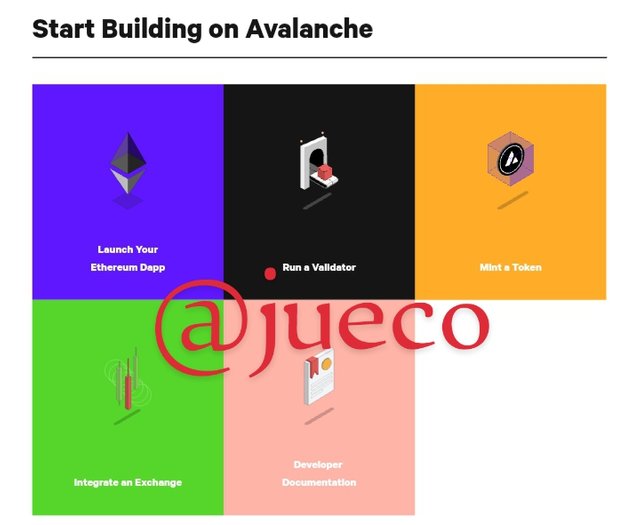
Source
This feature enables users to build their own ethereum dApp, mint token, run a validation and also integrate an exchange.
Below are reasons a user should build on Avalanche
INDIVIDUALS:
As seen above on the individual drop down, there are six drop downs and they shall all be explored.
- ROAD MAP:
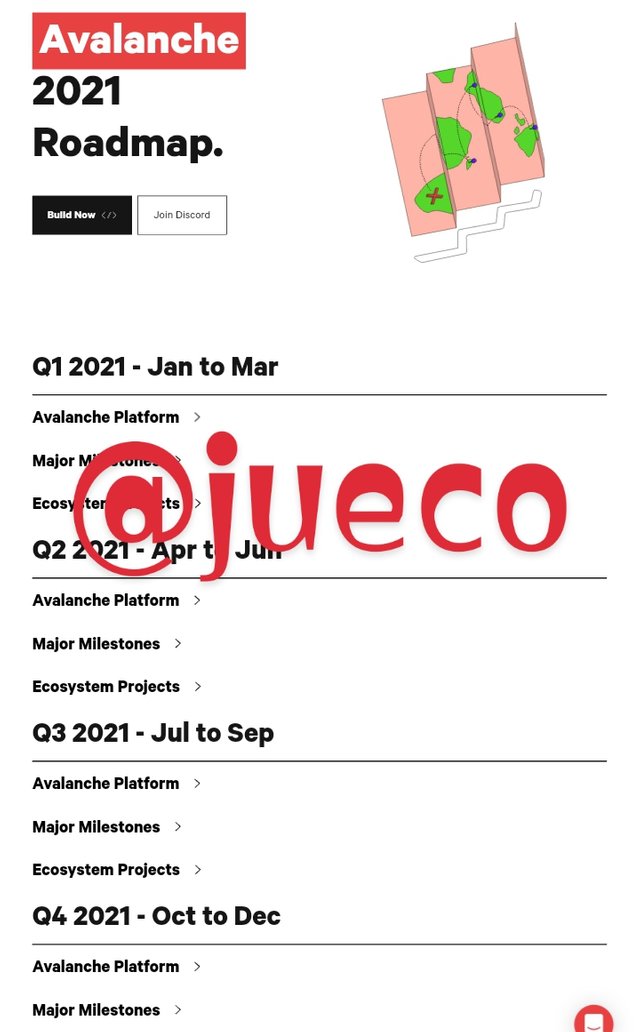
Source
This feature shows clearly the roadmap of the Avalanche system. The road map is divided into 4 time phases; Q1, Q2, Q3, and Q4, which covers approximately 3months each.
Each roadmap consist of the avalanche platform, the major milestone and their ecosystem projects.
- SOLUTION:
This feature helps us to see the solutions provided by the Avalanche platform, solutions in the form of NFTs( where users can mint their NFTs in seconds and at a lesser cost), in the form of institution, enterprises, government,( where users can create subnets and build application) and also in the form of Decentralized finance.
- ECOSYSTEM:
This feature consist of information one needs to know about the Avalanche platform. It allows users to easily access platforms as the Defi, gaming, stablecoin, tooling, payment nodes, NFTs, wallet and many more.
- AVALANCHE WALLET:
As seen above, this feature allows users to access their already created wallet or to create a new token if they had none.
- To create one ,I clicked on create new wallet from the above shown screenshot, I then clicked on generate key phrase as shown below
- I then copied the key phrase given to me in a paper and then stored it offline. After that, I clicked on access wallet
- I then filled in the missing mnemonic phrases and clicked on verify.
- I then clicked on access wallet
- I was then taken to my account. From my account, I can see the price of 1avax to be $90.78, and some other information are also shown
- AVALANCHE EXPLORER:
This feature shows the recent transactions that have taken place on the system, it also shows the chain responsible for such transactions.
Users can also view all transactions that have taken place on the system.
AVALANCHE-X :
On this drop down, we can see two explorable icons, the open grant and general proposal.
- OPEN GRANTS:
This page gives users the opportunity to explore the available open grant such as volatility index, synthetics and derivatives, stablecoin, lending and Decentralized exchange.
- GENERAL PROPOSAL:
This page gives users with awesome ideas the opportunity to submit their proposal on the platform.
This proposals are the are the project of such users, and when they are accepted, such user will work with a member of the Ava lab team, where the Ava member will act as the project grant ambassador.
To submit a proposal, a user will have to input his name or the name of his team
- Then he will proceed to input his team or individual background
He will then proceed to select a project category of which he will then input the project name
- He will then input his project description and the grant amount he needs
- He will then proceed to provide the other necessary information.
PRESS
As seen above, the press consist of two drop down, the press inquiries and press kits
The main function of the press feature is to provide users with the latest update on the development of the platform and it's activities
- COMMUNITY:
The Avalanche community assist to connect different users of the platform irrespective of their place of residence, through the use of social media.
- CONTACT:
The contact us page is also used to contact the Ava Lab team through the Avalanche platform. A user will have to input his name, email, his message and give a little detail about himself.
SHOW THE LAST CONTRACT VERIFIED ON THE C-CHAIN NETWORK AND SHOW THE SMART CONTRACT THAT WAS GENERATED AT THAT ADDRESS
To perform this operation, I visited Snow trace and the below appeared
- I then clicked on the blockchain icon located on the upper part of the screenshot, and I later clicked on verified contract
- Then a new display appeared, it consisted of verified contract
- I then clicked on the last contract verified and the below appeared.
The above screenshot consist f my contract address, contract name, contract creator, compiler version and many more information.
EXPLORE THE LAST BLOCK GENERATED IN THE C-CHAIN NETWORK
EXPLORE THE LAST BLOCK GENERATED IN THE C-CHAIN NETWORK
To carryout this task, I visited Snow trace and I clicked on blockchain as I did in question 3, and I later clicked on view blocks
From the screenshot above,we can deduce the following:
| Block | Stat |
|---|---|
| Block number | 9251980 |
| Age | 8secs |
| Transaction | 10 |
| Gas used | 1,372,828(17.16%) |
| Gas limit | 8,000,000 |
| Burned (Avax) | 0.03788AVAX |
| Hash | 0x25597187bc2d47bccbfba8cc08e27af69ef500915010757f534254c40608e419 |
| Parent hash | 0xd1e5c30ec7815ca48ec5f230a4e12f5f2eed0256d1c94d76e8b52b3241af6c39 |
| Time | Jan-07-2022, 11:28:47am + UTC |
EXPLAIN IN DETAILS THE AVAILABLE CONSENSUS PROTOCOL AND THE SNOWMAN CONSENSUS PROTOCOL
EXPLAIN IN DETAILS THE AVAILABLE CONSENSUS PROTOCOL AND THE SNOWMAN CONSENSUS PROTOCOL
Before we proceed, lets gain a little understanding on consensus.
Consensus may be explained as the process by which group of independent voters, otherwise called validators come to one accord to make a decision.
The Avalanche consensus protocol can be referred to a consensus protocol that is mainly used by the avalanche system to minimize the risk of error.
It ensures agreement between validators, making sure that it's network view on data is synchronized.
Throughout history, there have been three attempt to minimize the consensus problem.
We have the classical protocol, ones like practical Byzantine fault tolerance and the Hotstuff which are solidly dependent on all to all voting.
This implies that for a validator to come to a decision, he needs to hear from various set of nodes that makes up the network.We have the Nakamoto consensus, which was developed due to the fact that the classical consensus failed to handle global needs.
The Nakamoto consensus made it known that the creation of an adversary protocol that functions at a global scale is possible. He did this by giving the consensus problem a redefined look.
At the stage where classical protocol attains a probability of 1, Nakamoto consensus attains a probability of 1- e, where e refers to tiny error.
But the Nakamoto consensus had its fallback; it was slow, takes a longer period to attain transaction finality and also consumes lots of energy, and this fall back led to the creation of the next protocol; The Avalanche consensus protocol.
The avalanche consensus protocol is the next developed protocol, it was developed because the world wanted the development of a protocol that would posses both the advantages of the classical and Nakamoto consensus protocol.
The Avalanche protocol is also a probabilistic protocol, in the sense that, it accepts probability inorder to minimize the chance of error.
Avalanche has the ability to make the error so minimal that it is less likely that an error will occur on the node, that is a probability of getting a SHA-256 HASH.
To help us understand this better, the probability that a life+ending asteroid will be involved in a collision with the earth in the next century is higher than the probability that a SHA-256 hash collision will be detected by a network producing over 1billion transaction per second. This is how safe the Avalanche network is.
Also, the Avalanche does not make use of the proof of work like the Nakamoto consensus, instead it makes use of the proof of stake, inorder to compel users to have some tokens before they are permitted to vote on transactions.
The Avalanche, unlike Bitcoin that needs perpetual action, works only when there's available work to be done. It doesn't involve in mining activities to create new blocks.
The Avalanche works smarter instead of harder, that is, if there's no available transaction to vote on, the node does not work, but it listens until it hears a new transaction.
The Avalanche also have the ability to attain transaction finality within seconds. They do this without waiting for confirmation, which is an inheritance from the classical consensus.
The voting process of the Avalanche is very unique, in that, each validator makes decision independently.
SNOWMAN CONSENSUS PROTOCOL
The snowman consensus protocol happens to be the advanced implementation of the of the avalanche protocol that is powered by the Avalanche system.
The snowman protocol has the responsibility to create blocks and order transactions in a linear chain.
The snowman protocol is used by the c-chain, which is used to create smart contract, and also used by the p-chain, where subnet are made.
In the avalanche protocol, transaction are ordered parallelly but the snowman protocol order transactions linearly.
CONCLUSIONS
CONCLUSIONS
The creation and implementation of the avalanche protocol is a very good initiative, as it posseses 3 different chains that works differently and help combat the issue of blockchain trilemma.
I appreciate Prof @pelon53 for his great lecture, see you next season Prof, enjoy your holiday 😁😁.
